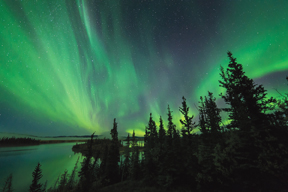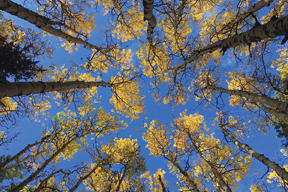
November 2020
Dear EarthTalk: Are there any environmental or health risks associated with the solar storms that have been hitting the Earth recently? ~ Betsy R., Suwanee, GA
Solar storms have been in the news lately, but the truth is these naturally occurring solar flares and coronal mass ejections (CMEs) from the Sun happen all the time—or at least a few hundred times a year from what we can tell here on Earth. They are caused by large-scale magnetic eruptions from the Sun that send particles into the atmosphere at high speeds. But luckily for us, the only threats these solar storms pose within the Earth’s atmosphere are to our technology.
According to the National Aeronautics & Space Administration (NASA), harmful radiation from these flares can’t pass through Earth’s atmosphere to physically affect humans on the ground; however, when intense enough, they can disturb the atmosphere in the layer where GPS and communications signals travel. Both CMEs and solar flares, if powerful enough, have this disrupting effect.
“When a CME strikes Earth’s atmosphere, it causes a temporary disturbance of the Earth’s magnetic field,” reports Deborah Byrd, editor of the EarthSky.org website. “The charged particles can slam into our atmosphere, disrupt satellites in orbit and even cause them to fail, and bathe high-flying airplanes with radiation.” Besides disrupting navigation and telecommunications systems, solar storms can also cause electricity blackouts down below on Earth. One example happened in Quebec on March 13, 1989. A particularly strong CME caused a power failure that stretched across Quebec and parts of the Northeastern U.S., blacking out the region for nine hours and affecting six million people in the process.

The technological effects of solar storms can be worrisome, but scientists can track and predict these storms in order to mediate their potential negative impacts on a region. Additionally, one positive result of solar storms in places that lie at higher latitudes is the appearance of the radiant Aurora borealis (also known as the Northern Lights) during these phenomena.
While there have been plenty of solar storms lately, this year actually marks a low-point for such activity—a so-called Solar Minimum—in the solar cycle. The Space Weather Prediction Center of the National Oceanic and Atmospheric Administration (NOAA) predicts that the next peak of solar activity will be in July of 2025.
Amateur astronomers interested in tracking solar storms should check out www.SpaceWeatherLive.com, a non-profit, all-volunteer project out of Belgium which coordinates information from several websites on a range of topics including astronomy, space, aurora and related subjects. One of the site’s cool features is a free glimpse into the last three days of solar storm activity hitting the Earth’s atmosphere.
If you would like to become more involved in the process of tracking solar storms, the Solar Stormwatch II project led by University of Reading in England looks for volunteers to help record data. Volunteers can virtually aid the project by observing CME data and imagery on the project’s website and recording/outlining what they see.
CONTACTS: EarthSky, www.earthsky.org;
SpaceWeatherLive.com, spaceweatherlive.com;
Solar Stormswatch II, zooniverse.org/projects/shannon-/solar-stormwatch-ii.
————————————————————————————-
Dear EarthTalk: How will global warming change the distribution of trees across the continental U.S.? Which types of trees and forests are most at risk? ~ Mike Powers, Golden, CO
It’s true that climate change is already affecting tree distribution and forest cover in the United States (as well as everywhere), but only time will tell which tree species are most successful at adapting and whether we will lose significant amounts of forest cover overall.
“A walk in the woods or a stroll on a tree-lined street could be a very different experience just a few decades from now,” says U.S. Forest Service researcher Stephanie Worley Firley. “Higher temperatures, altered precipitation patterns, and longer growing seasons predicted for the future could require that some tree species will have to move—or be moved—into new areas where habitat will be more suitable.” She adds that some tree species may be able to stay in place by adapting to new conditions, but many others are unlikely to be able to adapt and “may succumb to the pressures of climate change.”

One example of an iconic tree species that is already suffering from the effects of climate change is the Quaking Aspen, the most widely distributed tree species in North America. To day the tree is still common in higher elevation regions of Colorado and Utah as well as throughout the rest of the American West, but that might change in the coming decades. Researchers have been tracking the decline of aspens in Colorado for at least 20 years at the hands of climate change and related stressors. Given their shallow root systems, aspens are particularly sensitive to drought; warmer, drier weather overall as a result of global warming means more drought and more trouble for the trees moving forward. Researchers worry that aspens may be gone from the southern (and driest) band of its range within decades, and foresee drastic declines in the tree’s overall distribution as temperatures inch up, drought pervades and forest fires rage throughout the region.
Another iconic tree that has already been hit hard by global warming is the Sugar maple, famous as the source of Vermont maple syrup. Warmer winters have already shortened the syrup “tapping” season by more than 10% and if the trend continues there won’t be enough winter to sustain the $200 million/year Vermont maple syrup industry. Some other tree species on the ropes thanks to climate change include Balsam fir, Black ash, Paper birch, White pine, Tamarack and Red spruce.
Researchers from the North Carolina-based Eastern Forest Environmental Threat Assessment Center are using forest inventory and analysis data from the U.S. Forest Service to compare where tree species occur presently with a wider range of where they could move or expand given rising temperatures and other changing landscape conditions. By looking at how landscape, weather and temperature conditions will change over the next three decades based on a conservative model of climate change, the researchers can start to project where the most suitable conditions for different types of trees might occur across the country by 2050. This kind of knowledge can help land managers prepare for the changes coming and can help planners map out forward-looking, climate-friendly zoning patterns.
CONTACTS: A Review of the Potential Effects of Climate Change on Quaking Aspen (Populus tremuloides), fs.fed.us/psw/publications/documents/psw_gtr235/psw_gtr235.pdf; Eastern Forest Environmental Threat Assessment Center, forestthreats.org.
EarthTalk® is produced by Roddy Scheer & Doug Moss for the 501(c)3 EarthTalk.
See more at https://emagazine.com. To donate, visit https://earthtalk.org.
Send questions to: question@earthtalk.org

